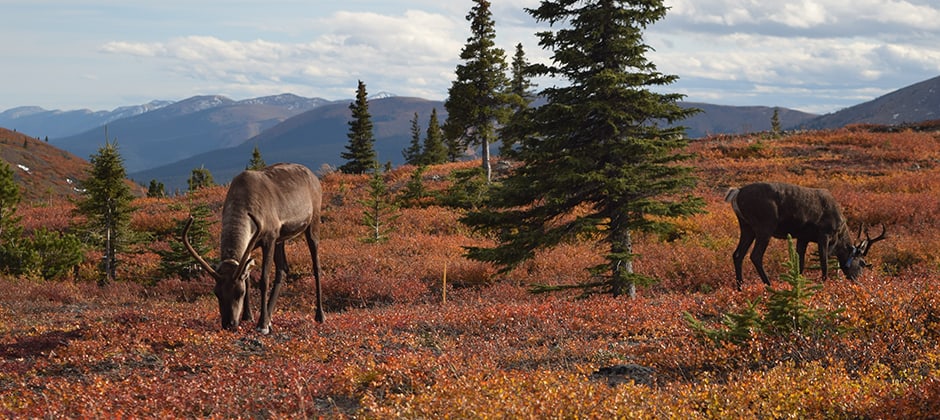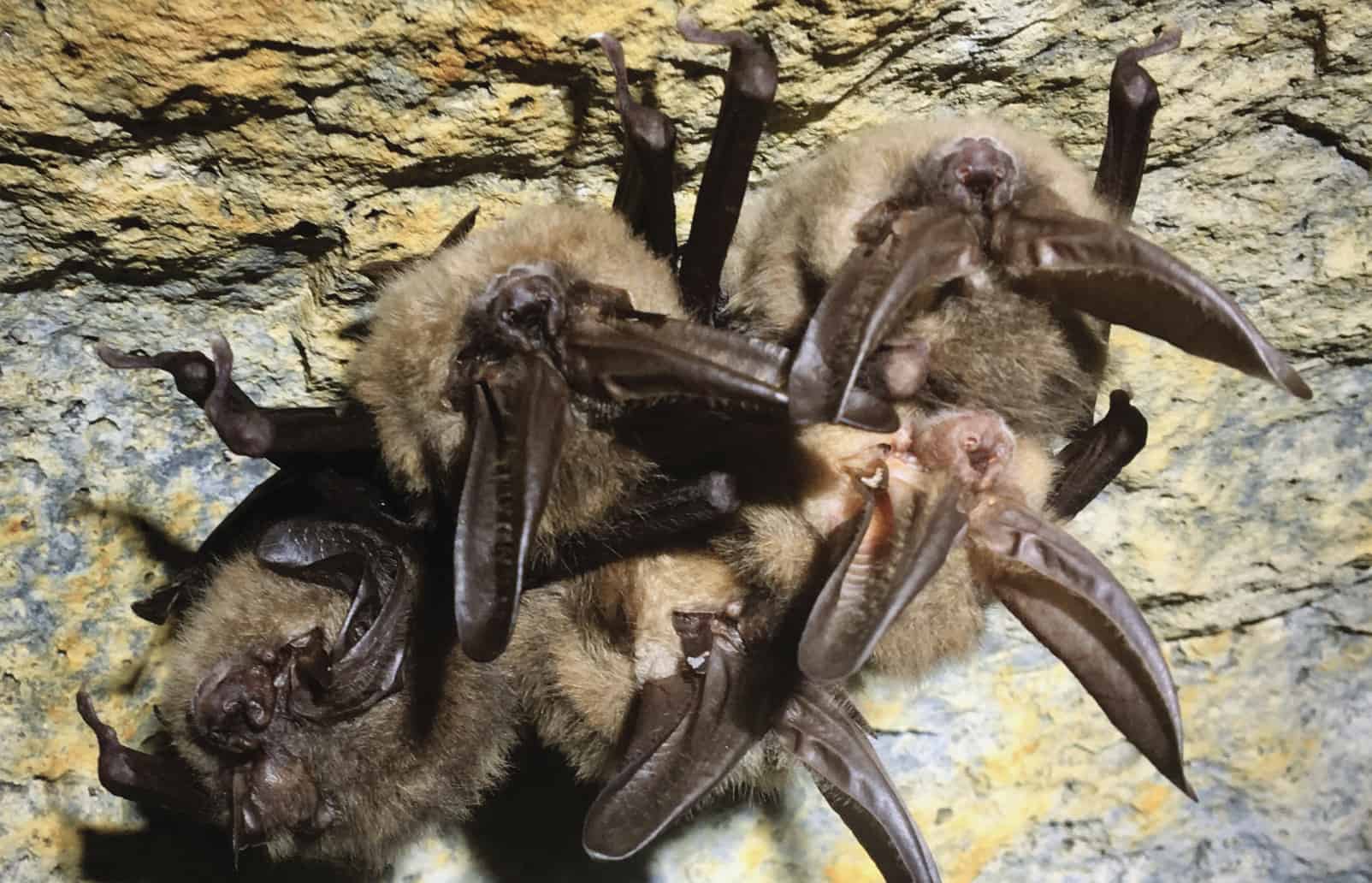Share this article
JWM: Summer forage for B.C. caribou in short supply
Concerns about food availability for caribou often focus on the harsh winter months, but researchers recently found summer forage in northeastern British Columbia is limited, raising further concerns about recovering the declining species.
“In some cases, forages are in such low abundance that there isn’t enough there for the caribou to eat,” said TWS member Kristin Denryter, lead author of the study published in the Journal of Wildlife Management.
Researchers found that for many plant communities, the majority of understory vegetation is unsuitable and unpalatable for caribou (Rangifer tarandus). What’s available is too limited to sustain them at a crucial time, when females are lactating and calves are growing.
By late summer, the researchers found, declining nutrition in the vegetation exacerbates the problem, impacting caribou when they need to store fat and protein for winter. Caribou nutrition levels were typically between 20 and 50 percent below their requirements, Denryter’s team found. Their data suggest a harsh nutritional environment during the summer in which females face reduced body condition and juveniles experience limited growth and development.
“That’s even though caribou in these ranges are in such low densities,” said Denryter, now a wildlife physiologist for the Alaska Department of Fish and Game.
To conduct their research, Denryter’s team studied the diets of 16 captive, trained caribou that were placed in temporary enclosures. The enclosures were constructed in areas used by native caribou across the mountains and boreal forests of northeastern British Columbia.
They recorded over 1 million bites over 942 hours of observation in the three-year-study. When the team analyzed the caribou diets and the time it would take them to eat enough to put on fat, gain muscle and grow, they found that forage in many of the region’s plant communities was inadequate to provide the energy and protein that caribou require.
The findings suggest the need for “diverse, productive vegetation communities in summer on the landscape,” Denryter said, including early seral plant communities.
Often, caribou conservation efforts focus on conserving old forests, which often have lichens to support caribou in the winter. Those are important during winter, she said, but they may lack forbs and shrubs—like willows—that caribou eat while rearing their calves in the summer, when females’ nutritional needs are up to three times greater than they are in the winter. Other research has found that body condition of wild caribou in the region is low and that starvation during summer may be an important contributor to mortality of adult females.
The new findings could present a dilemma to managers, though. Many plants that provide good nutrition for caribou also are important for moose (Alces alces). Moose are a primary prey species for wolves (Canis lupus), but wolves attracted by moose often find caribou an easier meal, posing a risk to their recovery.
“Can nutrition be improved for caribou without increasing predation risk?” Denryter asked. The answer is beyond the scope of the study, she said, but to answer it, managers may need to identify the plants caribou need and determine if there are habitat conditions that would benefit caribou without increasing predation.
This article features research that was published in a TWS peer-reviewed journal. Individual online access to all TWS journal articles is a benefit of membership. Join TWS now to read the latest in wildlife research.
Header Image:
Researchers used tame caribou to determine summer nutrition levels in northeastern British Columbia.
Credit: Kristin Denryter








